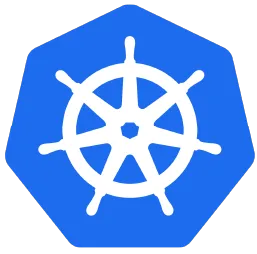IaC Learning Path
The Infrastructure as Code (IaC) Learning Path is designed to provide individuals with a comprehensive understanding of managing infrastructure through code. Participants will acquire the necessary skills to efficiently manage infrastructure through code, empowering them to streamline and automate deployment processes effectively.
How long will it take for me to complete?
Test your Readiness for Free!
Discover other Learning paths
Topic based learning paths
Role based learning paths
FAQs
What is Infrastructure as Code (IaC)?
Infrastructure as Code is an approach to managing and provisioning infrastructure resources using machine-readable configuration files or scripts. It involves treating infrastructure deployments as code, allowing for automation, version control, and reproducibility.
Why should I use Infrastructure as Code?
There are several benefits to using Infrastructure as Code, including:
- Automation: IaC enables the automation of infrastructure provisioning, configuration, and deployment processes, reducing manual efforts and improving efficiency.
- Consistency: By defining infrastructure as code, you can ensure that your infrastructure is consistent across different environments, minimizing configuration drift and potential issues.
- Scalability: IaC makes it easier to scale infrastructure resources up or down based on demand by modifying the code or configurations.
- Collaboration: Infrastructure code can be version controlled and collaborated on by teams, promoting better teamwork and knowledge sharing.
Auditing and Compliance: IaC allows for better tracking and auditing of infrastructure changes, helping with compliance requirements and security best practices.
What are some popular tools for Infrastructure as Code?
There are several popular tools available for implementing Infrastructure as Code, including:
- Terraform: A versatile tool that supports multiple cloud providers and infrastructure technologies.
- AWS CloudFormation: A service provided by Amazon Web Services (AWS) for provisioning and managing AWS resources using JSON or YAML templates.
- Azure Resource Manager (ARM) Templates: A service provided by Microsoft Azure for defining and deploying Azure resources using JSON templates.
- Google Cloud Deployment Manager: A service provided by Google Cloud Platform (GCP) for creating and managing GCP resources using YAML or Python templates.
- Ansible: A configuration management tool that can also be used for Infrastructure as Code.
Can I use Infrastructure as Code for on-premises infrastructure?
Yes, Infrastructure as Code can be used for managing on-premises infrastructure as well as cloud-based infrastructure. Tools like Terraform and Ansible support provisioning and configuration of resources in on-premises environments, allowing for consistent infrastructure management.
Is Kubernetes knowledge needed for Terraform?
No, Kubernetes knowledge is not a requirement for learning Terraform. While Terraform can be used to provision Kubernetes resources, it is not dependent on Kubernetes. Terraform is a general-purpose infrastructure provisioning tool that can be used with various cloud providers and technologies.
Ansible or Terraform: Which one should I use?
The choice between Ansible and Terraform depends on your specific use case and requirements.
- Ansible is primarily a configuration management tool that focuses on automating software provisioning, configuration, and orchestration. It is well-suited for tasks such as server configuration, application deployment, and managing infrastructure state.
- Terraform, on the other hand, is an infrastructure provisioning tool specifically designed for managing and provisioning infrastructure resources. It excels at managing cloud resources, creating infrastructure as code, and supporting multi-cloud environments.
In some cases, both Ansible and Terraform can be used together, with Ansible handling configuration management tasks and Terraform handling the provisioning of infrastructure resources.
Is there any prerequisite for the HashiCorp Terraform Associate certification?
There are no formal prerequisites for the HashiCorp Terraform Associate certification. The certification is designed for individuals who are new to Terraform but have a basic understanding of infrastructure concepts and cloud platforms. It is recommended to have some hands-on experience with Terraform and familiarity with cloud platforms like AWS, Azure, or Google Cloud, as the exam covers topics related to Terraform usage and best practices.

.svg)





.svg)

.svg)






.svg)





